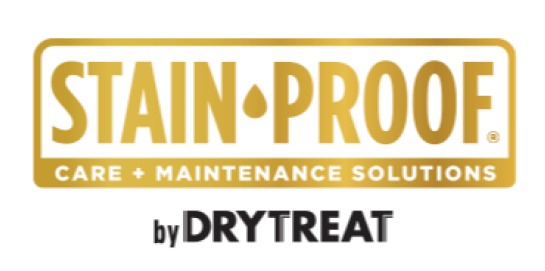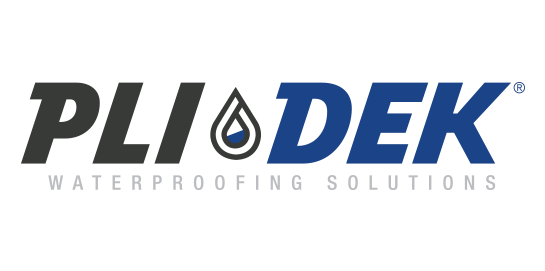Applying low permeable floor finishes over concrete can be a treacherous task if one is unaware of the many pit falls that await the inexperienced flooring contractor or do it yourselfer. Each year millions of dollars are lost due to floor finish failures. Failure in low permeability flooring finishes often occurs where there are high moisture levels in the concrete. This high moisture content along with the alkalinity naturally present in concrete can eventually create an aggressive concentrate that migrates to the bond line of the floor finish. As the floor finish is exposed to this high alkaline condition the bonding adhesive or coating material can be softened, eventually giving way to failure. This failure may be evidenced by adhesive breakdown, blisters, dis-bonding, staining or growth of microbes. So what must you know about concrete before you take the risk of applying a coating or other non-breathing floor finish?
You Must Understand Basic Concrete Related Terminology
Cement: Cement is one of the most important building materials known to man. It is manufactured at high heat to exacting standards and it can be modified to meet certain design and performance requirements. There are 5 basic types of cement. The most common cement used today is type 1. When it is blended with sand and water it becomes mortar and when it is blended with fine and course aggregate it becomes concrete.
Concrete: Concrete in its basic form, is a blend of cement, water, fine and course aggregate. Once these components are mixed together at the proper ratios a chemical reaction takes place whereby water reacts with the cement particles to form a paste. This paste is what binds the blended aggregates together to form a stone-like substance known around the world as concrete. This process reaction is called “hydration”.
Hydration: Hydration is the reaction that occurs when water comes into contact with cement particles. The hydration process only requires a water to cement ration of .22:1 to properly react. While this is the minimal amount of water needed to complete the hydration reaction, this low cement to water ratio is not feasible for the majority of applications where concrete is employed because of the stiffness of this material. Thus, additional water is needed to make the placement of concrete possible and convenient. This extra water is referred to as “Water of Convenience”.
Water of Convenience: The amount of water needed to make placement of concrete possible above that amount which is required to fulfill the hydration demands of cement. Although higher water content offers more workability, excess water contributes to weaker, overly porous and permeable concrete. It also lengthens drying and is a major cause of shrinkage cracks and warping.
Water to Cement Ratio: The water-to-cement ratio (w/c) is an engineering design control for determining the proper ratio of the weight of water to the weight of cement (not the weight of the aggregates combined with the cement). Typical values are expressed as .4 or .5 or .4:1 or .5:1. Scientists have found that w/c ratios between .4 and .5 typically result in better concrete construction. High w/c ratios (more water of convenience) substantially increase the drying time of concrete and can cause delays in flooring installations. It is important to note that water permeability increases exponentially when concrete has a water cement ratio greater than .5:1.
Concrete Cure: To achieve optimal curing of concrete, temperature, adequate moisture and time are all required. Since durability and strength is significantly established through effective curing, the process of curing (separate from that of drying concrete) is a most crucial step for concrete construction. It has been routinely documented that the right environmental conditions are needed for optimal curing of concrete. High relative humidity and ambient temperature readings between 50°F and 75F are desirous as they slow down the evaporation of moisture from the placed concrete. The Portland Cement Association recommends a 6 day curing time as a minimum.
Concrete Dry: Proper conditions must be maintained for the actual drying process of concrete. Significant to this process is the moisture condition of the concrete slab, especially for moisture sensitive floor finishes such as linoleum, wood flooring, and non-breathable coatings. As a general rule it takes 28-30 days for each inch of concrete to dry under the right environment. Higher temperatures and lower humidity conditions above the slab reduce the dry time. Cooler, humid conditions extend the dry time. Concrete poured in very high humidity conditions will not dry sufficiently until the building’s HVAC system is operating to lower the humidity above the slab. Hard troweled concrete and curing compounds, so commonly used today as an alternative to keeping the concrete surface physically wet during the initial curing period, will lengthen the drying period and may contribute to delays in the construction schedule. If the concrete is not dry and the schedule cannot be modified, the resulting choices are to install a negative side moisture mitigation system, or take the chance of moisture related failure.
Vapor Barrier: ICRI Guideline No. 03741 defines a vapor barrier as allowing 0.0 metric and 0.0 US perms as determined by ASTM E96. Without an effective vapor barrier, the concrete is subject to moisture intrusion from sources below the slab. The soil, subgrade and sub base can maintain 100% relative humidity levels even under dry weather conditions (and in areas of the world considered arid) and may provide an infinite source of moisture that can enter and move through the slab unchecked. Moisture moves through the concrete as liquid water or water vapor. High levels of water vapor can accumulate to the point of saturation and condense into liquid water. Capillary action can draw liquid water through the fine soil and into the concrete. Capillary breaks of crushed stone are often placed below the slab to stop the capillary rise of liquid water but they will not stop the free movement of moisture vapor. The availability of moisture vapor from below the slab is not influenced by the depth of the water table. Other sources of moisture can find their way under the slab and will eventually move upward through the concrete.. Sources include rainfall, damaged drain pipes and drain tiles, landscape irrigation, water run-off from embankments around the structure or from inadequately designed gutters and downspouts. Although rare, hydrostatic pressure can play a role in moisture failures on slabs placed below the water table.
Vapor Retarder: ICRI Guideline No. 03741 defines a vapor retarder as “a material that minimizes the transmission of water vapor from the soil support system through the slab, but is not 100% effective in preventing its passage”. The general consensus among experts in the flooring field is that a vapor retarder is one that allows less than 0.2 metric perms (0.3 U.S. perms) as determined by ASTM E96.
pH: pH, or “power of hydrogen” is a chemistry term referring to the measurement of alkalinity or acidity of a solution. pH solutions of 7 on a logarithmic scale are considered neutral. Solutions with a value less than 7 are more acidic, where values higher than 7 are more alkali.
Concrete Shrinkage: All concrete shrinks after placement. This is due to its loss in volume. When the rate of concrete shrinkage exceeds the tensile strength of the concrete, cracking and warping can occur. Slab issues, joint stability, and structural cracking (decreased load-carrying capacity) are also potential risks associated with concrete shrinkage.
28 Day Cure: The time it takes for concrete to achieve most of its design strength - not to be confused with the time at which floor finishes can be successfully installed.
Carbonation Carbonation of concrete is a process by which carbon dioxide from the air penetrates into concrete and reacts with calcium hydroxide to form calcium carbonates. Carbonation is a significant reason reinforcing steel in concrete corrodes.
Negative Side Moisture Mitigation: An alkaline resistant material designed to effectively reduce permeability of the coated concrete.
You Must Understand Methods of Moisture Testing
When we evaluate a given situation, we use our senses to assist us in coming to a reasonable conclusion. Acting as tools, our eyes, ears, nose and mouth send critical data to our brain, which compares and contrasts this data with stored information, allowing us to form an opinion about the situation we have encountered. Concrete moisture testing follows a similar process. The flooring professional has numerous testing methods (tools) that once understood, serve as his senses for evaluating moisture in concrete. By using all, or a combination of testing methods, one has a better chance of properly evaluating the situation and arriving at a reasonable conclusion.
ASTM D 4263: ASTM D 4263 is often called the “plastic sheet method”. In this test a piece of polyethylene sheeting is taped to the concrete for 16-24 hours and then examined for moisture gathered under the plastic. While this method can assist in evaluating the condition of the concrete it cannot give a quantitative value and is therefore not a reliable method for predicting the moisture content of concrete. This test should not be relied upon when determining whether moisture is in an acceptable range for installation of non-permeable finishes.
Moisture Meters:Electrical impedance meters are placed in direct contact with the concrete substrate and are designed to measure comparative levels of moisture across a substrate up to two inches deep. These meters are not considered effective for quantitative concrete moisture testing, but may be helpful in identifying areas where further testing using a quantitative test method may be conducted.
ASTM F-1869: ASTM F-1869, also known as the Calcium Chloride test, was developed over 40 years ago. In this test the concrete is cleaned by light grinding. After a waiting period of 24 hours, a pre-weighed tray of anhydrous calcium chloride is placed on the prepared concrete. The tray is covered with a plastic dome and sealed to the floor. Calcium chloride is hygroscopic (absorbs moisture) and absorbs moisture present under the dome thereby increasing the weight of calcium chloride in the tray. After 60-72 hours, the tray is removed and weighed a second time. Through a calculation, the weight gain is calculated and the results are reported in pounds of moisture emitted from 1,000 sq. ft. in a 24 hour period. Material manufacturers have historically set acceptable levels between 3-5 pounds as reported using this test method as acceptable results for applying low permeable floor finishes over concrete. For calcium chloride tests to give meaningful results, the building must be acclimatized to the anticipated service conditions for 48 hours prior to testing. This means the windows and doors must be in place with the HVAC operating. If the test is done in an "open air" setting, the results may be lower than if the heating or air conditioning is operational because without the HVAC, a relative state of equilibrium exists with the concrete moisture and the environment above the slab. When the building becomes acclimatized, cooler, drier air on top of the slab can draw moisture out of the slab and higher test readings may result. Another reason for the necessity of acclimatizing the building is that calcium chloride test results are significantly affected by ambient humidity and temperature above the slab. If the concrete temperature is higher than the anticipated service conditions, the test results will be higher and if the concrete is colder, the test results will be lower. If the relative humidity above the concrete slab is high at the time the test is run the results will be higher because unsealed concrete absorbs moisture from the testing area as well as emits it when the air is less humid. Although calcium chloride testing has been the accepted standard in the United States for years, the market is beginning to understand the limitations of this test. It was believed that ASTM F 1869 measured moisture vapor moving through the slab, but it is now widely understood that this test measures static moisture in the top 1/2”-1” of the concrete only. Because of this, an elevated reading may indicate that the moisture level at the top of the concrete is too high for low permeable finishes but a low reading may only indicate that the uppermost section of the concrete is dry enough to receive low permeable finishes. ASTM F1869 cannot measure the moisture that resides below this uppermost region and thus may provide a false negative result. False negatives, even from properly executed calcium chloride tests, have duped many flooring contractors and material manufacturers into applying materials only to have a moisture related failure come back to haunt them.
ASTM F 2170: In the ASTM F 2170 test, holes are drilled into the concrete at a specified depth and liners are inserted to the bottom of the hole. The holes are then capped and allowed to equilibrate for 72 hours before inserting the probes and taking the relative humidity readings. Concrete placed on grade is measured at 40% of the slab thickness. Readings taken deeper in the slab will generally show higher RH readings while readings nearer the top of the slab will show lower RH readings. Because of this, it is critical to know the slab thickness. Cutting core samples is often the only way to get an accurate measurement of the slab thickness and should be performed at numerous locations to verify the thickness in the areas where RH tests are to be taken. This step is often skipped because of cost, inconvenience and/or potential liabilities involved with intruding concrete where electrical and other utilities may exist. The inability to show proof of the concrete depth could be argued as a violation of the test method and result in a less than satisfactory defense position. Acceptable levels of relative humidity within the slab range from 75-85% depending upon the flooring installed. Because the relative humidity probe testing is done on the interior of the concrete, it is less susceptible to atmospheric conditions above the slab than the calcium chloride test (ASTM F 1869). For this reason, it is more useful in determining moisture levels in non-climatized areas (though the test still requires an acclimatized environment).
PH Testing: pH testing can be helpful in analyzing the concrete and possible exposure to acids and alkalis and serves as an additional data point when evaluating concrete substrates. It has been found to be effective as a failure analysis tool as it quickly shows readings where moisture has made its way to the flooring/concrete bond line.
You Must Understand Why Moisture Causes Flooring Failures
Moisture in concrete generally moves from high humidity environments deeper in the concrete matrix to less humid environments above the concrete slab. Moisture movement begins early in the concrete drying process as the free batch water evaporates from the freshly placed slab, and slows as the moisture reaches a state of equilibrium with the environment above the slab. When the building is enclosed and the HVAC system is activated, moisture drive is accelerated as the moisture is driven toward the drier environment created by the HVAC. When low permeability flooring is installed over concrete, moisture within the slab redistributes itself to achieve a new state of equilibrium. Moisture from the bottom regions of the concrete slab moves upward, carrying soluble alkalinity to the upper region of the concrete slab. If moisture levels in the concrete are high and the concrete has a well-developed and connected pore system, the result is the creation of a moist, highly alkaline environment at the concrete/non permeable finish interface. This environment is a root cause for most failures as the combination of moisture and corrosive alkalinity erodes the adhesive bond between the concrete and the non-permeable flooring system.
Blistering is often believed to be the result, in full or in part, of a process called osmosis. Osmosis is the process of water movement across a semi-permeable membrane into solute concentrations on either side of the membrane. In other words, with a higher concentration of free water and alkaline at the upper cell, the molecules will attempt to pass through the slab where the lower part of the cell maintains mostly pure water. This naturally occurring equalization causes the pure water to be pulled up into the upper cell causing pressurized water blisters to form in the coating. This blistering can generate pressures between the coating and substrate of between 10-15 psi.
Speculations as to why blisters appear after epoxy coatings have been successfully installed over concrete are widespread. One reason often cited is that extended periods of exposure to a high alkaline solution at the bond line weakens the bond of the coating to the concrete. Since the adhesion of the coating has been weakened blistering is more apt to occur. Proof of this failure has been noted by tests revealing organic materials, such as plasticizers and amines (typically found in epoxy) to be found during fluid extraction from individual blisters. These materials could only be found in the extraction if they had come from the epoxy itself.
You Must Understand the Reality of ASR
The truth about Alkali Silica Reaction (ASR) is that it is directly associated with moisture, and while it does not always present itself during installation, the result of the gel ASR creates will most assuredly cause cracking and expansion issues in concrete. The gel is caused by a reaction between reactive forms of silica, which are used for curing and densification, and hydroxyl ions in alkaline portions of the concrete (the portion of the concrete that is typically comprised of moisture in pores of the concrete). Experts believe that alkali-related reaction, once thought to be prevalent only amidst larger aggregate, is now being detected with reactive fine aggregate particles. ASR is difficult to detect and most manufacturers of moisture mitigation systems exclude system failures related to ASR in their warranty language.
You Must Understand the Relationship between ASTM E96, F1869 and F 2170
The fact is that there is NO RELATIONSHIP BETWEEN E96 AND F1869 AND F2170! ASTM E 96 measures the permeability of material. The test takes place in a controlled environment and the results reported cannot be cross referenced to ASTM F1869 or F2170. Manufacturers who make claims that relate E96 to F1869 or F2170 are doing a disservice to the flooring industry. The new ASTM F3010-13 will assist the flooring industry to talk in meaningful terms regarding how products are classified and what each classification means to the contractor, material manufacturer and owner.
You Must Understand how Moisture Mitigation Systems Work
Moisture mitigation systems are essential for low-permeable flooring installations where known moisture problems in concrete floors exist. They act as a preventive measure against the cost of moisture related flooring failures and have proven to be an effective solution over the past decade. They work by isolating moisture and its related corrosive alkalinity from low permeable floor finishes and allow construction schedules to be met even when the concrete has not yet dried to an appropriate level to receive the specified flooring material. They are a saving grace for concrete floors that have no vapor retarder/barrier in place and for projects that must be completed without sacrificing the long-term performance expected by owners!






